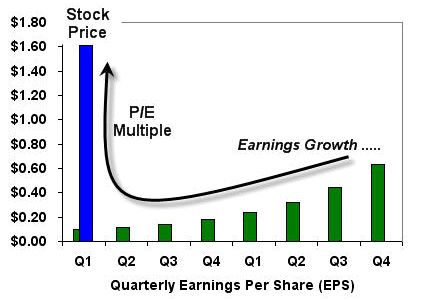Contents:
- Accounting Debit & Credit Rules
- Additional Services
- Debit Credit Chart
- What are debits and credits in accounting?


Rather, they measure all of the claims that investors have against your business. Most businesses these days use the double-entry method for their accounting. Under this system, your entire business is organized into individual accounts. Think of these as individual buckets full of money representing each aspect of your company.
Using Control Accounts in Your Business Bookkeeping – The Motley Fool
Using Control Accounts in Your Business Bookkeeping.
Posted: Fri, 05 Aug 2022 07:00:00 GMT [source]
And remember the rule that debits increase debit accounts and credits increase credit accounts. Most business owners understand that they need to keep track of their income and expenses but many get tripped up when figuring out what accounts are debits and credits. By getting a firm grasp on the concept of debits and credits, you’ll have a leg up when it comes to completing your accounting accurately. A trial balance is a bookkeeping worksheet in which the balances of all ledgers are compiled into equal debit and credit account column totals. A general ledger is a record-keeping system for a company’s financial data, with debit and credit account records validated by a trial balance.
It is accepted accounting practice to indent credit transactions recorded within a journal. Debit cards and credit cards are creative terms used by the banking industry to market and identify each card. From the cardholder’s point of view, a credit card account normally contains a credit balance, a debit card account normally contains a debit balance.
Accounting Debit & Credit Rules
A debit is an entry on the left side of an account, while credit is an entry on the right side of an account. Debits and credits will increase and decrease account balances differently depending on the type of account, which we will look at more closely below. Before the advent of computerized accounting, manual accounting procedure used a ledger book for each T-account.

The foundation of double-entry accounting is this procedure. Accounts “roll up” into specific lines on a company’s balance sheet or income statement, which depict a company’s financial health, value, and profitability. They also assist internal and external decision-makers, such as management of the company, lenders, investors, and tax authorities.
Additional Services
Nominal accounts relate to expenses, losses, incomes or gains. The first known recorded use of the terms is Venetian Luca Pacioli’s 1494 work, Summa de Arithmetica, Geometria, Proportioni et Proportionalita . Pacioli devoted one section of his book to documenting and describing the double-entry bookkeeping system in use during the Renaissance by Venetian merchants, traders and bankers.
- Here are a few examples of common journal entries made during the course of business.
- First the debit column is totaled, then the credit column is totaled.
- Your goal with credits and debits is to keep your various accounts in balance.
- As you can see, Bob’s equity account is credited and his vehicles account is debited .
Once again, debits to revenue/gain decrease the account while credits increase the account. Putting all the accounts together, we can examine the following. On the bank’s balance sheet, your business checking account isn’t an asset; it’s a liability because it’s money the bank is holding that belongs to someone else.
Debit Credit Chart
This double-entry system provides accuracy in the accounting records and financial statements. The double entry concept is visible in the accounting equation itself. The assets of your business must equal what your business owes and owns (i.e. its liabilities and equity). Revenue is the money or cashflow we generate from selling a particular product or service. For example, revenue incoming from our product sales via our shop or online.
how to calculate sales tax accounts and owners equity accounts typically have a credit balance and are shown on the right side. Bank debits and credits aren’t something you need to understand to handle your business bookkeeping. Debits and credits are bookkeeping entries that balance each other out. In a double-entry accounting system, every transaction impacts at least two accounts. If you debit one account, you have to credit one other accounts in your chart of accounts. There is also a difference in how they show up in your books and financial statements.
Both of these financial statements are governed by the double-entry principle, however. Which balance sheet account provides evidence that Tootsie Roll records sales on an accrual basis rather than a cash basis? Trial Balance are a two- column summary with the accounts used in journal entry being shown, together with the total of… There are several groups of accounts that are included in your financial statements. When you’re keeping your own books, it’s important to understand how to record both debits and credits. Chart of accounts, that includes items like rent, utilities, payroll, and more.
So, you take out a https://1investing.in/ loan payable to the tune of $1,000 to buy the furniture. At FreshBooks, we help you protect your profits and time with a powerful bookkeeping service. By integrating with Bench, we help you track every dollar you spend while Bench handles bookkeeping and tax preparation.
What Is the Difference Between a Debit and a Credit?
Asset, expense, and loss accounts increase due to debits and credits. There is a corresponding credit decrease or increase in at least one other account every time a debit increases or decreases the value of one general-ledger account. The interests of the shareholders in the company’s assets are reflected in an equity account. Stocks, distributions, capital contributions, dividends, and retained earnings are a few examples. The below example illustrates a financial transaction in which a catering company provided its services for a client’s party.

Let’s assume that a friend invests $1,000 into your business. Immediately, you can add $1,000 to your cash account thanks to the investment. Using credit is different because it means you exceed the finances available to your business. Instead, you essentially borrow money, similar to how you would with a bank loan. A loss account is the opposite of a gain account, reflecting a decrease in value from nonprimary-business events.
What are debits and credits in accounting?
Transaction Of A BusinessA business transaction is the exchange of goods or services for cash with third parties (such as customers, vendors, etc.). The goods involved have monetary and tangible economic value, which may be recorded and presented in the company’s financial statements. Furthermore, the number of transactions entered as the debits must be equivalent to that of the credits. In Section 2.3 we recorded the consequences of these transactions in a balance sheet for Edgar Edwards Enterprises dated 6/7/20X2. As there were only six transactions, it was probably not too difficult. However, many enterprises have to record hundreds of transactions per day.
Debits record incoming money, whereas credits record outgoing money. In accounting, money coming in and out of your small business is recorded as debits and credits. In this journal entry, cash is increased and accounts receivable credited .

If a company buys supplies for cash, its Supplies account and its Cash account will be affected. If the company buys supplies on credit, the accounts involved are Supplies and Accounts Payable. For example, when a company borrows $1,000 from a bank, the transaction will affect the company’s Cash account and the company’s Notes Payable account.
Debit and credit are the cornerstones of the double-entry system. The simplest account structure is shaped like the letter T. Debits (abbreviated Dr.) always go on the left side of the T, and credits (abbreviated Cr.) always go on the right. Next we look at how to apply this concept in journal entries. The result of crediting one account while debiting another is the opposite.

